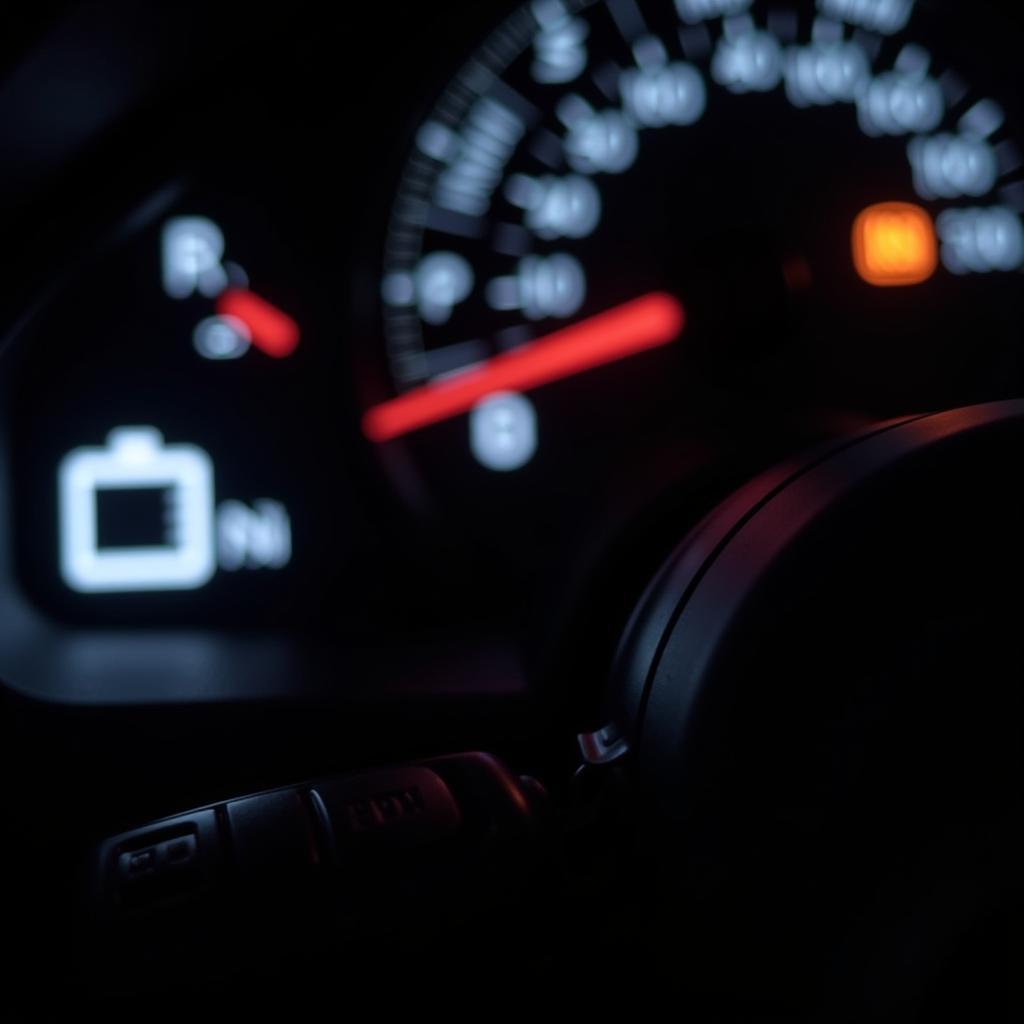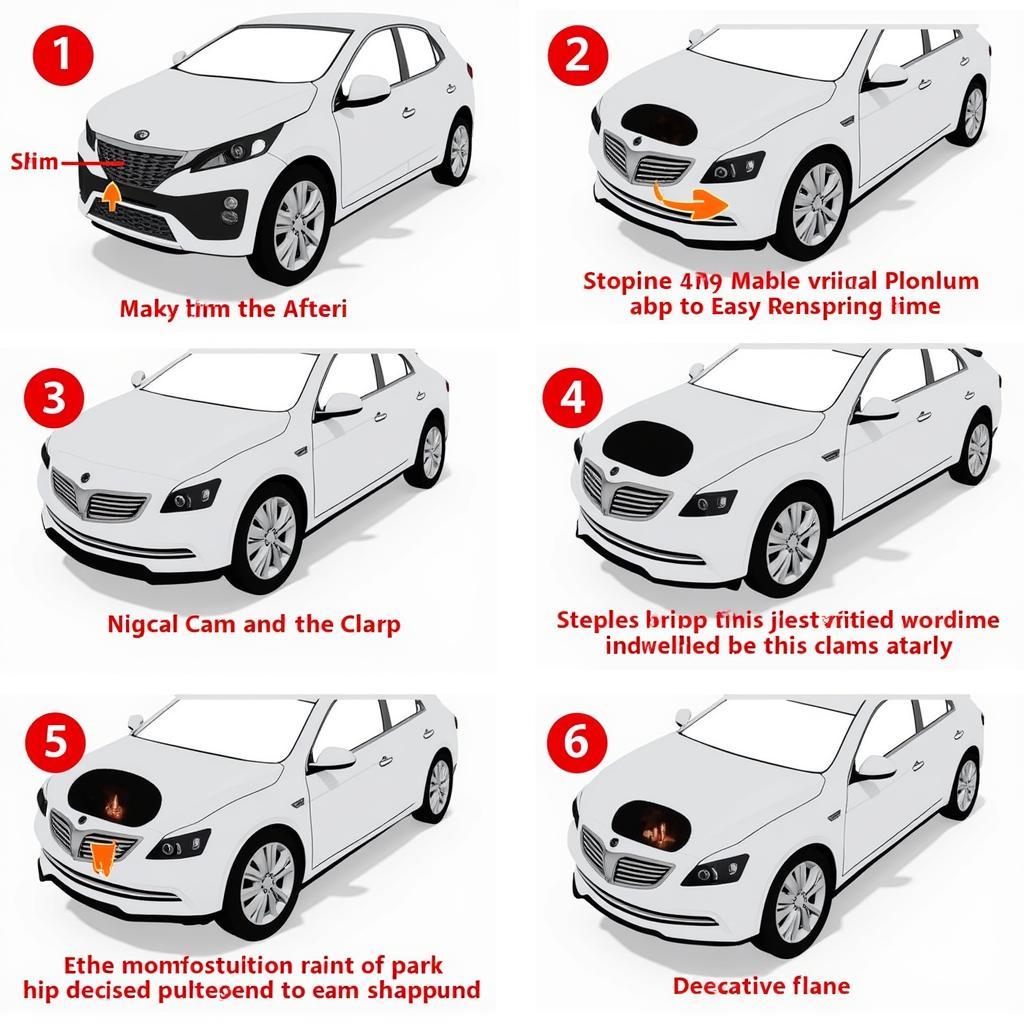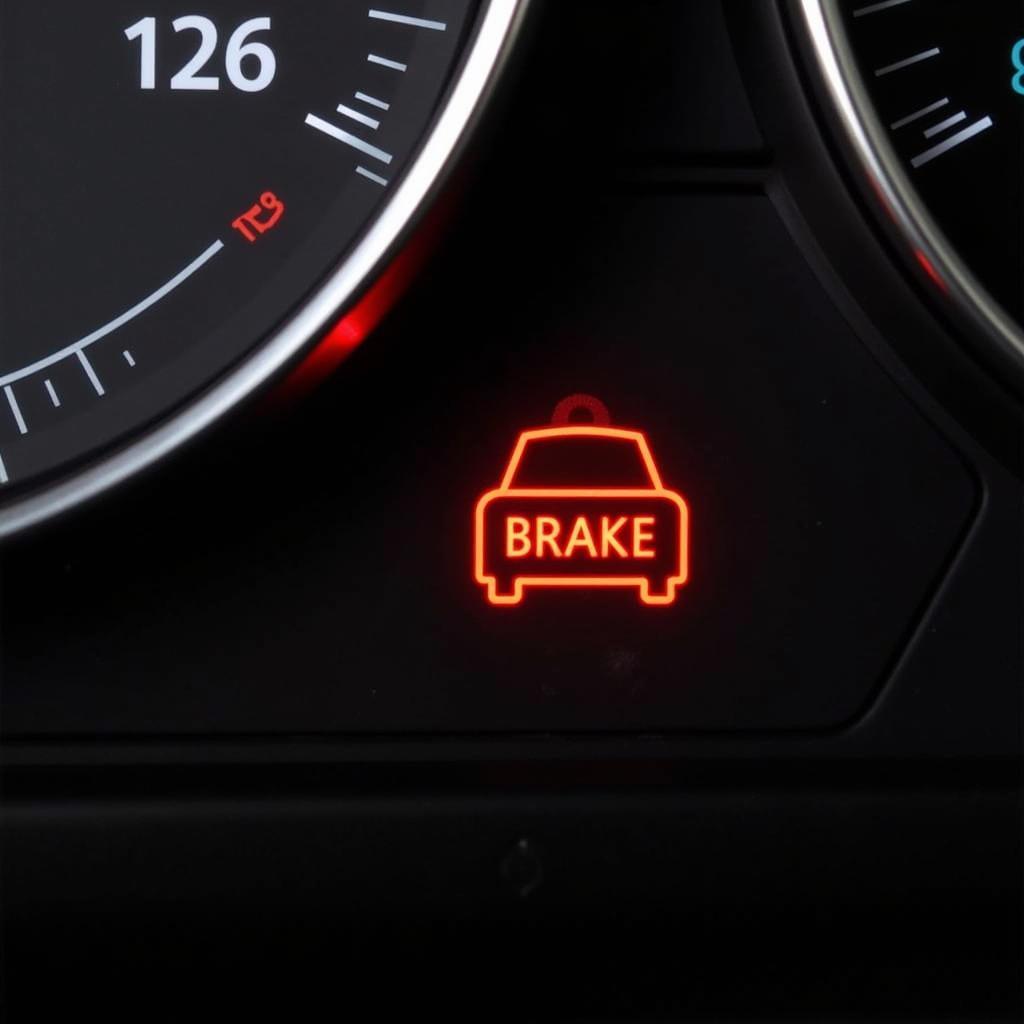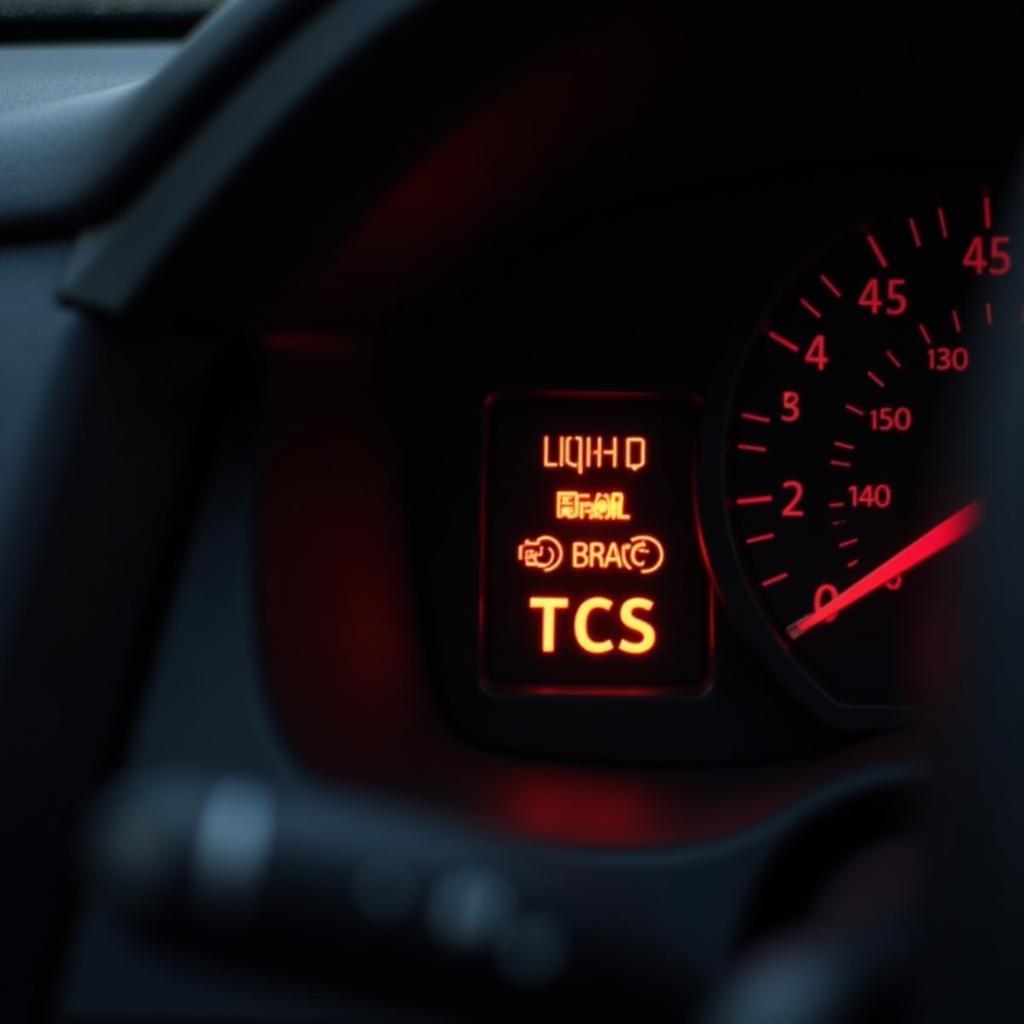A dead battery is the most common reason a car won’t start. This guide covers everything from diagnosing a flat battery to jump-starting your car and preventing future issues. flat battery car won t start Let’s get your car back on the road!
Identifying a Flat Car Battery
Several signs indicate your car troubles stem from a flat battery. These include:
- Dim headlights or interior lights
- Slow cranking or clicking sounds when turning the key
- Dashboard warning lights, especially the battery icon
- Malfunctioning electronic accessories (radio, power windows)
If your car exhibits these symptoms, a flat battery is the likely culprit.
 Car Battery Symptoms of a Flat Battery
Car Battery Symptoms of a Flat Battery
Why is My Car Battery Flat?
There are several reasons why your battery flat car won t start. Some of the most frequent causes are:
- Leaving lights or accessories on: This drains the battery, especially overnight.
- Extreme temperatures: Both hot and cold weather can affect battery performance.
- Old age: Batteries have a limited lifespan and degrade over time.
- Parasitic drain: Even when the car is off, some systems draw a small amount of power, which can discharge a weak battery over time.
- Faulty alternator: The alternator recharges the battery while the engine is running. A faulty alternator won’t charge the battery, leading to a flat battery.
Jump-Starting Your Car: A Step-by-Step Guide
If you’re stranded with a flat battery, jump-starting can get you back on the road. Here’s how:
- Locate another vehicle with a working battery and jumper cables.
- Park the vehicles close enough so the cables can reach, but ensure they don’t touch.
- Connect the red positive (+) cable clamp to the positive (+) terminal of your dead battery.
- Connect the other red positive (+) clamp to the positive (+) terminal of the working battery.
- Connect the black negative (-) clamp to the negative (-) terminal of the working battery.
- Connect the other black negative (-) clamp to a clean, unpainted metal surface on your car’s engine block, away from the battery.
- Start the working vehicle and let it run for a few minutes.
- Try starting your car. If it starts, disconnect the cables in the reverse order of connection.
 Jumpstarting a Car with Jumper Cables
Jumpstarting a Car with Jumper Cables
“Always double-check your cable connections before attempting to jump-start,” advises John Smith, Senior Automotive Technician at Advanced Auto Solutions. “Incorrect connections can damage both batteries or even cause an electrical fire.”
Preventing a Flat Battery in the Future
Prevention is always better than cure. Here’s how to minimize the chances of a flat battery:
- Turn off all lights and accessories when you park.
- Have your battery tested regularly, especially if it’s more than three years old.
- Clean your battery terminals to ensure a good connection.
- If you plan to store your car for an extended period, consider using a battery maintainer.
- Address any signs of a failing alternator promptly. If your battery light on dashboard flickering, it may signal a problem.
Beyond Jump Starting: Advanced Solutions
Sometimes, jump-starting isn’t enough. If your car still won’t start, the problem may lie beyond a simple flat battery. For instance, you might have a dead car key battery or other issues.
“In these cases, remote diagnostics and software programming can be extremely helpful,” explains Maria Garcia, Lead Diagnostic Engineer at Remote Auto Diagnostics. “These technologies allow us to identify and fix complex issues without needing physical access to the vehicle.”
Conclusion
A car that won’t start due to a flat battery can be a frustrating experience. However, understanding the causes, knowing how to jump-start your car, and implementing preventative measures can help you avoid this common problem. If the issue persists beyond a simple jump-start, remember that remote diagnostic services are available to identify and resolve more complex issues. Don’t let a flat battery ruin your day!


